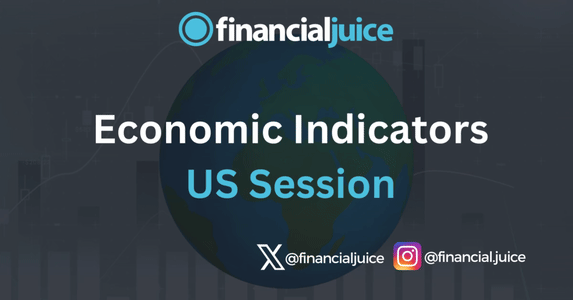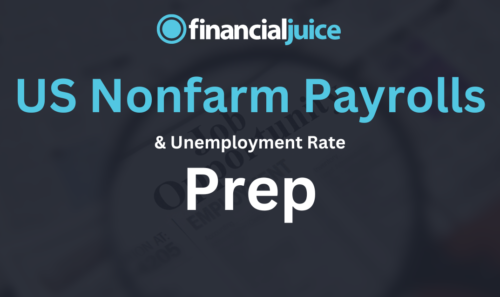
Week Ahead: Economic Indicators (US)
Hey, Traders!
For the September 16th week, here is a list of all of the major economic indicators being released during the US Session, with a brief synopsis of what they represent and what to possibly expect from the markets in reaction.
Tuesday 17th September
08:30 ET
US Retail Sales for August
US Retail Sales is a monthly economic indicator that measures the total sales of goods and services by retail stores across the United States.
Released by the Census Bureau, it provides insights into consumer spending trends, which is a key driver of the economy since consumer spending makes up about 70% of the US GDP.
An increase in retail sales signals economic growth and consumer confidence, while a decline suggests weakening demand.
The report covers a wide range of sectors, from automobiles to clothing, and is monitored by economists, policymakers, and investors to assess the health of the economy.
What to Expect
If retail sales come in higher than expected, we would be likely to see strength across the US assets (dollar, yields and US stocks), as it shows a resilient consumer in the face of tighter monetary conditions, which increases the likelihood of a soft landing for the US economy as we come out of the tightening cycle.
If it comes out weaker than expected however, we would be likely to see weakness across US assets.
Especially when combined with the weak prior employment situation report, this could exacerbate fears of a recession in the US.
Canadian CPI for August
The Canadian Consumer Price Index is a monthly measure released by Statistics Canada that tracks the changes in prices of a fixed basket of goods and services over time.
It reflects inflation at the consumer level, covering categories like food, shelter, transportation, and healthcare.
The CPI is a key indicator used to monitor inflation trends and the cost of living in Canada.
Rising CPI indicates higher inflation, meaning consumers are paying more for goods and services, while a decrease suggests lower inflation or deflation.
The Canadian CPI influences monetary policy decisions by the Bank of Canada.
What to Expect
If Canadian CPI were to come in higher than expect, we would be likely to see strength in CAD and weakness in Canadian stocks, as this would decrease the chances of a cut in the interest rate from the BoC at their next meeting.
If it were to come in lower than expected, we would be likely to see weakness in CAD and strength in Canadian stocks, as it would increase/solidify bets on a BoC rate cut at the next meeting.
09:15 ET
US Industrial Production for August
US Industrial Production is a monthly economic indicator released by the Federal Reserve that measures the output of the nation’s industrial sectors, including manufacturing, mining, and utilities.
It tracks changes in the volume of goods produced by factories, mines, and power plants, providing insights into the strength of the industrial sector.
Growth in industrial production signals economic expansion, while a decline may indicate a slowdown.
This indicator is closely monitored by policymakers, economists, and investors to assess the overall health of the economy and predict future economic activity.
What to Expect
Industrial Production is unlikely to cause a market reaction, based off of historical releases over the past year.
Having said that, an increase in Industrial Production would indicate an increase in demand for manufactured goods, which translates to a picture of a resilient consumer, which could reduce recession fears and cause strength across US assets.
If it were to come in lower than expected, the opposite could be true, as it could indicate deteriorating demand for manufactured goods, meaning a weaker consumer, and a higher chance of a recession in the US.
Wednesday 18th September
08:30 ET
US Housing Starts for August
US Housing Starts is a monthly economic indicator that tracks the number of new residential construction projects that have begun during a given period.
Released by the Census Bureau and the Department of Housing and Urban Development (HUD), it measures the initiation of construction on new single-family homes, apartments, and multi-family buildings.
Housing starts are an indicator of economic health because they reflect demand in the housing market, consumer confidence, and overall economic conditions.
An increase in housing starts signals growth in the housing sector, while a decrease can indicate a slowdown.
What to Expect
Housing starts are unlikely to cause a market reaction, based on historic releases for the last year.
Having said that, an increase in Housing Starts can point to increased demand for housing from US consumers, which can indicate increased consumer sentiment, which could reduce the chances of a recession in the US.
This could cause strength across the US assets (dollar, yields, & US stocks)
If it were to come out lower than expected, the opposite could be true.
10:30 ET
Weekly US EIA Crude Oil Inventories
The US Weekly EIA Crude Oil Inventories report, released by the Energy Information Administration every Wednesday, provides data on the current amount of crude oil held in storage across the United States.
This report helps gauge supply and demand dynamics in the oil market and can influence oil prices and market sentiment.
What to Expect
An increase in inventories suggests lower demand or higher supply, creating a potential downside in oil prices, while a decrease indicates higher demand or lower supply, causing a possible strengthening in oil prices.
13:30 ET
BoC Meeting Minutes
The BoC meeting minutes are the official records of the Bank of Canada’s policy discussions, detailing the economic conditions and factors influencing its monetary decisions, such as interest rates and inflation. These minutes offer insights into the central bank’s assessment of the economy and its rationale for policy actions, making them a key resource for economists and market participants to gauge potential future shifts in monetary policy.
What to Expect
Market participants are looking for any clues as to the future of monetary policy. Higher for longer rates would likely result in Canadian Dollar strength and Canadian stock weakness, whereas confidence in the inflation path may cause the opposite to occur.
14:00 ET
US Interest Rate Decision
The US Interest Rate Decision is made by the Federal Reserve’s Federal Open Market Committee (FOMC) and typically announced eight times a year.
This decision determines the target range for the federal funds rate, which is the interest rate at which banks lend to each other overnight.
The decision influences borrowing costs for consumers and businesses, affecting economic activity, inflation, and employment.
The FOMC bases its decision on various economic indicators such as GDP growth, inflation, and unemployment. The announcement is closely watched by investors, policymakers, and economists for insights into the future direction of US monetary policy.
What to Expect
Economists and the markets largely expect the US interest rate to be reduced by 25 basis points at this meeting, attention will also be on the Rate Statement.
Many market participants will focus on language regarding the employment situation, as well as US economic strength.
If the rate statement is seen as more dovish, including language that indicates greater confidence in inflation’s return to target, then this could boost/solidify rate-cut bets for the year, which could cause strength in US stocks, and weakness in the dollar. If it is seen as more hawkish, the inverse could be true.
This meeting will also be the release of the Summary of Economic Projections, which will give us updates on where Fed members view the Fed Funds Rate in the future, and the state of inflation and the economy.
Thursday 19th September
08:30 ET
US Weekly Initial & Continued Jobless Claims
Initial Jobless Claims measure the number of people filing for unemployment benefits for the first time in a given week. This provides an early indication of the health of the labor market and can signal changes in economic conditions.
Continued Jobless Claims represent the number of people who continue to receive unemployment benefits after their initial claim, reflecting longer-term unemployment trends.
A rising number of claims may indicate a weakening labor market, while a decline suggests improving conditions. These metrics are important for assessing the overall state of the economy and guiding monetary policy decisions.
What to Expect
With employment in focus at the moment, this report has been garnering a lot of market attention over the last 4 weeks.
A higher jobless claims number, indicating higher unemployment, would be likely to cause weakness across the US assets (dollar, stocks, and yields), as it feeds into the narrative of a hard landing/broader economic slowdown for the US economy as we come out of the tightening cycle.
A lower jobless claims number, indicating lower unemployment, would be likely to cause strength across the US assets, as it reassures the markets that the US economy may be able to exit the tightening cycle and enter the easing cycle without a recession/broader economic slowdown.
US Existing Home Sales
US Existing Home Sales is a monthly economic indicator reported by the National Association of Realtors (NAR) that tracks the number of previously owned homes sold during the month.
This data includes single-family homes, condos, and co-ops. It provides insights into the housing market’s health, consumer demand, and overall economic conditions.
An increase in existing home sales suggests strong housing demand and economic growth, while a decline may indicate a cooling market or economic challenges.
What to Expect
Housing data has not historically gotten meaningful reactions since the Fed’s tightening cycle began, but with the easing phase looming with interest rate cuts on the horizon, areas of the economy that can affect growth and underline broader economic activity, like housing, may be more in focus.
That being the case, if existing home sales comes in higher than expected, you could see some strengthening in US stocks and the dollar, and the opposite could be true if it were to come in lower than expected.




